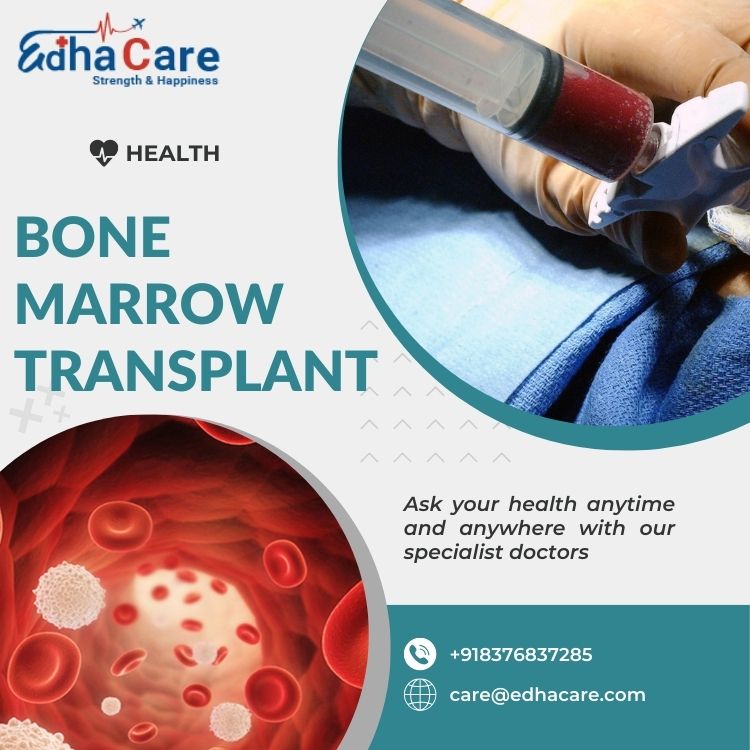What are the types of bone marrow transplant?

Bone marrow transplants, also known as hematopoietic stem cell transplants, offer a beacon of hope for individuals battling a range of life-threatening conditions. This complex procedure involves replacing damaged or diseased bone marrow with healthy stem cells, the body's master cells responsible for producing blood cells. Understanding the different types of bone marrow transplants is crucial for patients and their families as they navigate this challenging journey. This blog post will delve into the various types, exploring their nuances and potential benefits.
Stem Cells Power In Bone Marrow Transplants
Before diving into the types of transplants, let's understand the importance of stem cells. These unique cells reside primarily in the bone marrow and have the remarkable ability to self-renew and differentiate into all types of blood cells: red blood cells (carrying oxygen), white blood cells (fighting infections), and platelets (helping with blood clotting). When the bone marrow is damaged or diseased, it can no longer produce healthy blood cells, leading to various health problems. This is where bone marrow transplants come into play.
Types of Bone Marrow Transplants
The primary classification of bone marrow transplants hinges on the source of the stem cells. We can categorize them into three main types:
Autologous Bone Marrow Transplant:
In this type of transplant, the patient's own stem cells are harvested and used. This is a preferred option when the disease hasn't affected the stem cells themselves, such as in certain types of lymphoma or multiple myeloma. The process involves collecting stem cells from the patient's bone marrow or peripheral blood (after stimulating their release from the marrow) and storing them. Following high-dose chemotherapy or radiation therapy to destroy the diseased bone marrow, the stored healthy stem cells are infused back into the patient.
Advantages of Autologous Transplants: Lower risk of rejection since the cells are from the patient's own body. No need for immunosuppressant drugs after the transplant. Faster recovery compared to other types.
Disadvantages of Autologous Transplants: Risk of relapse if the harvested stem cells contain cancerous cells. Not suitable for all types of cancers or blood disorders.
Allogeneic Bone Marrow Transplant:
This type of transplant utilizes stem cells from a donor whose tissue type closely matches the patient's. Finding a suitable match is crucial for the success of an allogeneic transplant. The best-case scenario is a sibling match, as they have a 25% chance of being a perfect match. If a sibling match isn't available, the search expands to unrelated donors through national and international registries.
Advantages of Allogeneic Transplants: Offers a potential cure for many types of cancers and blood disorders. Provides healthy, disease-free stem cells.
Disadvantages of Allogeneic Transplants: Higher risk of complications, including graft-versus-host disease (GVHD). Requires strong immunosuppressant drugs to prevent rejection. Finding a suitable match can be challenging.
Umbilical Cord Blood Transplant:
This type of transplant uses stem cells collected from the umbilical cord blood of newborns. Umbilical cord blood is a rich source of stem cells and offers some advantages.
Advantages of Umbilical Cord Blood Transplants: Readily available and can be stored for future use. Lower risk of GVHD compared to allogeneic transplants from adult donors. Less stringent matching requirements.
Disadvantages of Umbilical Cord Blood Transplants: Contains a smaller number of stem cells, which can delay engraftment (the process of the transplanted cells settling in the bone marrow and producing new blood cells). Higher risk of infection in the initial period after the transplant.
Other Classifications
While the source of stem cells is the primary way to categorize bone marrow transplants, other classifications exist:
-
Myeloablative Transplants: These involve high doses of chemotherapy and/or radiation to completely destroy the patient's existing bone marrow before the transplant. This approach is often used for aggressive cancers.
-
Non-Myeloablative Transplants: These use lower doses of chemotherapy and/or radiation, reducing the toxicity and side effects. This type of transplant may be suitable for older patients or those with other health conditions.
-
Mini-Transplants: A type of non-myeloablative transplant that uses even lower doses of chemotherapy, focusing on suppressing the patient's immune system to allow the donor cells to engraft.
Conclusion
Bone marrow transplants have transformed treatment for severe conditions. Understanding transplant types, benefits, and risks is crucial. Despite challenges, transplants offer a chance for cure or improved life quality. Ongoing research enhances outcomes and access. Consult a healthcare professional for guidance on bone marrow transplant decisions.
Other treatment information are also available by specialty:
https://sites.google.com/view/bmt-bone-marrow-transplant/home
https://form.jotform.com/250550686065055
https://elearning.adobe.com/profile/Bonemarrow
We are excited to announce the **launch of the Sharkbow Marketplace!** 🎉 Now you can:
- 🛍️ List and sell your products – Open your own store easily.
- 📦 Manage orders effortlessly – Track sales and communicate with buyers.
- 🚀 Reach thousands of buyers – Expand your business with ease.
Start selling today and grow your online business on Sharkbow! 🛒
Open Your Store 🚀 ✖🚀 What Can You Do on Sharkbow?
Sharkbow.com gives you endless possibilities! Explore these powerful features and start creating today:
- 📝 Create Posts – Share your thoughts with the world.
- 🎬 Create Reels – Short videos that capture big moments.
- 📺 Create Watch Videos – Upload long-form content for your audience.
- 📝 Write Blogs – Share stories, insights, and experiences.
- 🛍️ Sell Products – Launch and manage your online store.
- 📣 Create Pages – Build your brand, business, or project.
- 🎉 Create Events – Plan and promote your upcoming events.
- 👥 Create Groups – Connect and build communities.
- ⏳ Create Stories – Share 24-hour disappearing updates.
Join Sharkbow today and make the most out of these features! 🚀
Start Creating Now 🚀- Art
- Causes
- Crafts
- Dance
- Drinks
- Film
- Fitness
- Food
- Games
- Gardening
- Health
- Home
- Literature
- Music
- Networking
- Other
- Party
- Religion
- Shopping
- Sports
- Theater
- Wellness
